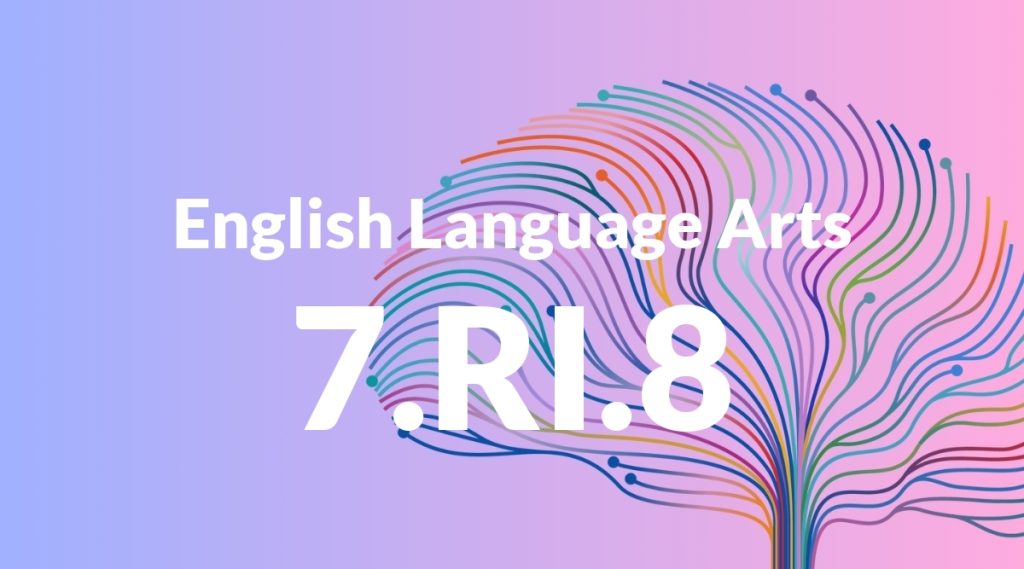Standard: 7.RI.8 – Trace and evaluate the argument and specific claims in a text, assessing whether the reasoning is sound and the evidence is relevant and sufficient to support the claims.
Grade level: Grade 7
Subject: English Language Arts
Domain: Reading: Informational Text
Teacher Overview
This standard focuses on developing students’ ability to critically analyze arguments and evidence in informational texts. It is essential because it prepares students to be discerning readers and informed citizens who can navigate a world filled with diverse and often conflicting information. Before tackling this standard, students should be comfortable identifying main ideas and supporting details in a text, as well as distinguishing between fact and opinion.
Mastering this standard will enable students to construct their own well-reasoned arguments and support them with relevant and sufficient evidence, a skill that is crucial for high school and beyond.
Common Misconception 1
Students may believe that any evidence presented in a text is automatically relevant and sufficient. This misconception can lead to accepting weak or irrelevant evidence as valid support for an argument.
Intervention 1
To address this misconception, provide students with practice in evaluating the quality of evidence. Use examples of strong and weak evidence and have students discuss why some evidence is more compelling than others.
Common Misconception 2
Students might think that an argument is valid if it simply sounds convincing, regardless of the actual evidence. This can result in students being swayed by persuasive language rather than solid reasoning.
Intervention 2
Encourage students to cross-check arguments with multiple sources and to look for logical fallacies or unsupported claims. Use exercises that focus on identifying and analyzing logical fallacies in arguments.
Prerequisite Knowledge
Students should have a basic understanding of identifying main ideas and supporting details in a text, as well as distinguishing between fact and opinion.
Subsequent Knowledge
After mastering this standard, students will be able to construct their own well-reasoned arguments and support them with relevant and sufficient evidence, a skill crucial for high school and beyond.
Instructional Activities
- Debate current events in class
- Analyze news articles for bias
- Evaluate the credibility of online sources
- Write persuasive essays with strong evidence
- Conduct peer reviews of argumentative essays




